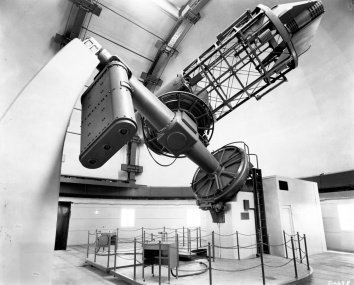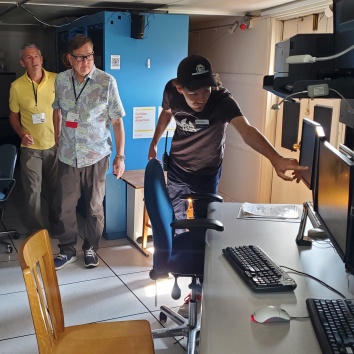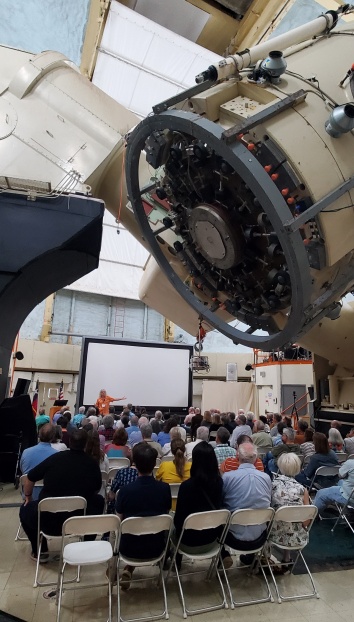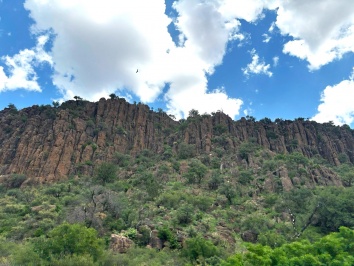Our thanks for another wonderful Board of Visitors meeting! Over 207 members and guests joined us to experience VIP access to McDonald Observatory, learn about the cutting-edge science taking place there, and to connect with one another. Thanks to clear skies, evening programming - which included a Star Party and two nights of telescope viewings – offered a particularly inspiring exploration of the cosmos.
The event featured talks on the Department of Astronomy and the Observatory’s research and instrumentation. This year’s presentations also revealed some of the Observatory’s inner workings, from how astronomers use and maintain the telescopes, to how staff provide memorable experiences for 75,000 annual visitors, to how the Dark Skies Initiative is protecting the region’s night skies.
About the Board of Visitors
The Board of Visitors is one of The University of Texas at Austin’s oldest and most respected donor groups. Members live across Texas and beyond, united by a love of and commitment to the field of astronomy.
Over time, Board of Visitors members have helped us accomplish great things through their generous contributions. This ranges from funding chairs, professorships, and graduate student fellowships, to helping with private contributions to build the magnificent Hobby-Eberly Telescope, the Hobby-Eberly Telescope Dark Energy Experiment, the Frank N. Bash Visitors Center, and much more.
To learn about ways to support the Observatory, visit McDonaldObservatory.org/Support.
Science Talks
The JWST Revolution: Insights and Puzzles from the Infant Cosmos
Mike Boylan-Kolchin, Professor
The James Webb Space Telescope is able to look farther into the universe than any other telescope. This is revolutionizing our understanding of the early universe, which doesn’t look the way astronomers predicted. In particular, early galaxies are much larger than expected – spurring a flurry of investigation. In his talk, Boylan-Kolchin provided an overview of this new view of the early universe, what it means for cosmology (the study of the origin and evolution of the universe), and UT Austin’s leading role in redefining our understanding of how the first galaxies grew and evolved.
Investigating the Chemistry of the Galactic Disk
Zoe Hackshaw, Graduate Student
Throughout their lives, stars forge new elements within their cores. These elements then become the building blocks of subsequent generations of stars, which forge their own new elements. As a result, the presence of different elements throughout our galaxy is connected with the location of stars, their age, and their surroundings.
Hackshaw is using this principle to uncover and confirm key information about our galaxy. By mapping the location of various elements, her work shows that 1) the Milky Way’s interior formed before its outer regions and 2) it, indeed, has spiral arms. Since we are unable to travel outside of the Milky Way to see it from above, research like hers is vital in helping us understand what our home galaxy looks like and how it evolved.
Using HETDEX and JWST to Identify the Smallest Galaxies in the Largest Known Super Protocluster
Jennifer Poppe, Undergraduate Student
Galaxies are often gravitationally bound to one another. And these groups of galaxies are often bound to other groups in what are called galaxy clusters. In the early universe, galaxy clusters were still coming together – the loose structures that would one day become galaxy clusters are called “protoclusters.”
Poppe shared how astronomers are studying a particularly large protocluster named Hyperion. Located 11 billion light years away, it is composed of hundreds of galaxies. By comparing data from the Hobby-Eberly and James Webb Space Telescopes, Poppe and her colleagues are creating a count of Hyperion’s galaxies and mapping their locations. This map will help astronomers better understand the structure and evolution of galaxy clusters, and in turn, of the universe.
Poppe is a Board of Visitors member, former lawyer, and current astronomy undergraduate student.
Science Discussion Groups
Methods of Modern Astronomy: How We Learn About the Universe Using Telescopes and Their Instruments
Niv Drory, Senior Research Scientist
Drory provided an overview of how astronomical technology works and a history of its development. Pivotal breakthroughs include the development of larger and larger telescopes, the creation of instruments that can observe in a diversity of wavelengths, and better tracking systems that provide stable views of the objects. More discoveries may be imminent as our ability to study the universe grows to include observations through neutrinos and gravitational waves.
More Photons, Better Focused: A Look into the Primary Mirror Maintenance and Upgrades at the HET
Herman Kriel, HET Facility Manager
Hanshin Lee, Senior Research Scientist
The Hobby-Eberly Telescope is one of the five largest telescopes in the world. Its 10-meter primary mirror is formed by 91 individual, hexagonally shaped segments. Kriel and Lee shared how they keep the reflective surface of these mirrors pristine – one of the core challenges of the telescope’s daily operations. Future upgrades to the telescope and its High Resolution Spectrograph will bring the telescope to its full scientific potential in the coming decade.
Check out this video to learn what goes into maintaining the telescope’s mirrors.
Preserving McDonald Observatory’s Dark Skies
Teznie Pugh, McDonald Observatory Superintendent
Stephen Hummel, Dark Skies Initiative Coordinator
McDonald Observatory enjoys some of the darkest night skies of any major observatory in the continental United States. In an ever-brighter world, this darkness is no coincidence. Pugh and Hummel shared what the Observatory's Dark Skies Initiative is doing to maintain the region’s famously dark skies. This includes partnering with local communities to spread night sky friendly lighting practices; monitoring area light pollution; and engaging with the broader astronomical community to address the issues posed by increasing satellite activity.
A Day in the Life of the McDonald Observatory Visitors Center
Katie Kizziar, Assistant Director for Education and Outreach
Rachel Fuechsl, Programs Manager
Many astronomical institutions offer public programming, but few take it to the same level as McDonald Observatory. Kizziar and Fuechsl shared an overview of the site’s offerings, and what a typical day looks like for visitor center staff. Popular programming includes Star Parties (attended by 33,000+ in 2023) and solar viewings (attended by 8,000+ in 2023). Smaller programs include astrophotography and telescope workshops, livestream astronomy tours, and professional development for teachers.










